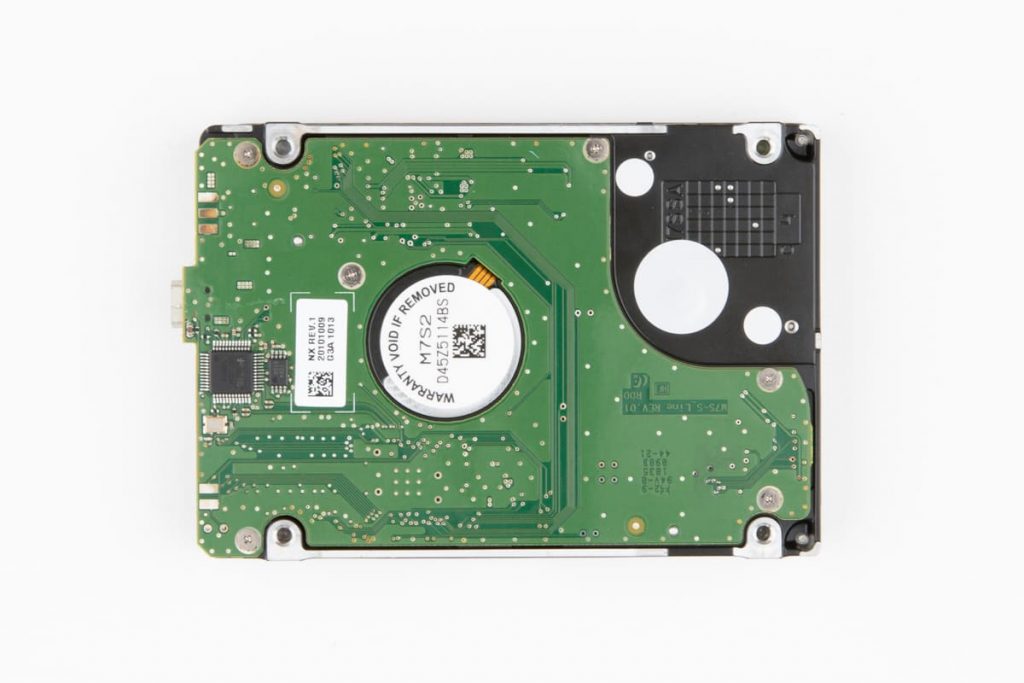A laptop crash can be very frustrating. It often happens without warning.
Understanding what to do next is crucial. When your laptop crashes, you might feel lost. Important work, school assignments, or personal files could be at risk. But don’t panic. There are simple steps you can follow to try and fix the issue.
This guide will help you navigate through the process. It will cover basic troubleshooting tips and solutions. By following these steps, you can recover your laptop and get back to what you were doing. Let’s start with understanding the common causes of laptop crashes and what you can do about them.
Identify The Problem
Determine the cause of your laptop crash. This helps in finding the right solution quickly and efficiently. Start by checking for software or hardware issues.
When your laptop crashes, it can feel like the end of the world, especially if you’re in the middle of an important task. But, before you panic, it’s crucial to identify the problem. Knowing what went wrong can help you fix it quickly and prevent future issues. Here are some steps to help you pinpoint the problem.Check For Error Messages
Error messages are often the first clue when your laptop crashes. They can provide valuable information about what’s gone wrong. Look for any messages on your screen when the crash occurs. Write them down or take a picture with your phone. These messages might seem like gibberish, but they can guide you towards the solution. If you see a blue screen with white text, commonly known as the “Blue Screen of Death” (BSOD), don’t ignore it. The BSOD usually includes an error code that you can search online for more information.Listen For Unusual Sounds
Your laptop can give you auditory clues about its health. Pay attention to any unusual sounds coming from it. Grinding or clicking noises often indicate a failing hard drive. If you hear beeping sounds, these could be BIOS beep codes, which signal hardware issues. Once, my laptop started making a loud whirring noise before crashing. It turned out the fan was clogged with dust, causing the CPU to overheat. Cleaning the fan fixed the problem. By actively listening and noting these sounds, you can diagnose the issue more accurately. Identifying the problem is the first step to getting your laptop back on track. Have you experienced any of these signs before? Share your story in the comments!
Credit: digitaldjinfo.com
Restart The Laptop
When your laptop crashes, the first step is often to restart it. Restarting can resolve many common issues. It clears temporary files and resets the system. This can help restore normal operation. Here’s how to restart your laptop properly.
Perform A Soft Reboot
A soft reboot is the easiest way to restart your laptop. First, save all your work. Then, close any open programs. Click on the ‘Start’ menu. Select ‘Restart’ from the power options. Your laptop will shut down and start again. This process often fixes minor problems.
Conduct A Hard Reboot
If a soft reboot doesn’t work, try a hard reboot. This involves physically powering off the laptop. To do this, press and hold the power button. Hold it until the laptop turns off completely. Wait for a few seconds. Press the power button again to turn the laptop back on. This method can resolve more serious issues.
Safe Mode Access
When your laptop crashes, accessing Safe Mode can be a lifesaver. Safe Mode allows your computer to start with a minimal set of drivers and services, making it easier to diagnose issues. It’s a feature designed to help you troubleshoot and fix problems without the interference of unnecessary programs.
Boot In Safe Mode
To boot your laptop in Safe Mode, follow these steps:
- Restart your laptop.
- As it boots up, press and hold the F8 key (or Shift + F8 for some models).
- You’ll see a menu with several options. Choose Safe Mode.
Once you’re in Safe Mode, your desktop may look different. That’s normal. What you need to focus on is finding the root cause of the crash.
Run Diagnostic Tools
Now that you’re in Safe Mode, it’s time to run diagnostic tools. These tools help identify hardware or software issues causing your laptop to crash.
- Open the Control Panel and navigate to System and Security.
- Click on Security and Maintenance and select Start Maintenance.
- This will run a series of tests to check for system errors.
Using diagnostic tools can save you hours of frustration. They pinpoint the problem, so you can take corrective action.
Have you ever thought about how much time you spend trying to fix a tech issue without any direction? Safe Mode and diagnostic tools give you that direction. They’re like a flashlight in a dark room, guiding you to the problem.
Don’t skip these steps the next time your laptop crashes. They’re practical and actionable. Safe Mode access can be the difference between a quick fix and a prolonged headache.

Credit: www.pitsdatarecovery.com
Check For Overheating
When your laptop crashes, one of the first things to check is overheating. Overheating can cause your system to slow down, freeze, or shut down unexpectedly. Addressing this issue can potentially save you from frequent crashes and improve your laptop’s performance.
Inspect Ventilation
First, make sure your laptop’s vents are not blocked. Poor ventilation can trap heat inside, leading to overheating. Check if your laptop is on a soft surface like a bed or couch, which can block the vents.
Place your laptop on a hard, flat surface to improve airflow. Elevate it slightly if possible. You can use a laptop stand or even a few books to lift it off the surface. This can make a big difference in keeping it cool.
Clean The Fans
Over time, dust and debris can accumulate in your laptop’s fans. This can hinder their ability to cool your system. Cleaning the fans can drastically improve airflow and cooling efficiency.
You can use a can of compressed air to blow out the dust. Be gentle to avoid damaging the internal components. If you’re comfortable, you can also open the laptop case to clean the fans directly.
Have you noticed your laptop getting hot to the touch? Taking these steps can help keep it cool and running smoothly. Do you have any other tips for preventing overheating? Share your thoughts in the comments below!
Run Antivirus Software
Running antivirus software is crucial when your laptop crashes. Malware or viruses can cause system crashes, data loss, and slow performance. Antivirus software helps to detect and remove harmful threats. Follow these steps to ensure your laptop is safe and secure.
Update The Software
Ensure your antivirus software is updated to the latest version. Updates include new virus definitions and security patches. Updated software can detect and remove the latest threats. Check for updates regularly to keep your system protected.
Perform A Full Scan
Open your antivirus software and select the option to perform a full scan. A full scan checks every file and program on your laptop. This process can take some time, but it is thorough. It helps to identify and remove hidden threats. Do not interrupt the scan. Let it complete for the best results.
Check For Software Conflicts
Software conflicts can cause your laptop to crash unexpectedly. Check for conflicting programs or updates to resolve the issue. Uninstall or update problematic software to ensure smooth operation.
When your laptop crashes, it can be frustrating and inconvenient. One common cause is software conflicts. Addressing these conflicts can often resolve the issue and get your laptop back to functioning smoothly.Uninstall Recent Programs
Think about the last few programs you installed. Sometimes, new software can cause conflicts with existing applications. Uninstalling recent programs can help pinpoint the culprit. Navigate to your Control Panel, select “Programs and Features,” and remove any software installed around the time your laptop started crashing. Have you ever installed a new game or productivity tool, only to find your laptop acting up? Removing these recent additions can often clear up the problem.Update Drivers
Outdated drivers can also lead to crashes. Drivers are essential for your hardware to communicate with your operating system. Updating drivers can enhance compatibility and stability. Visit the manufacturer’s website for your laptop or individual components like graphics cards and download the latest drivers. Imagine trying to run a marathon in outdated shoes. Just like shoes need to be up-to-date for optimal performance, your laptop needs the latest drivers to run smoothly. Are your drivers up-to-date? Checking and updating them can be a game-changer for your laptop’s performance.Restore System
When your laptop crashes, restoring the system can help. This process can bring your laptop back to its previous state. It is a good first step before trying more drastic measures.
Use System Restore
System Restore is a handy tool. It can revert your laptop to a previous state. This can fix issues caused by recent changes. To use System Restore, go to your Control Panel. Click on “System and Security,” then “System.” Select “System Protection,” and choose “System Restore.”
Follow the prompts to choose a restore point. Pick a date when your laptop was working fine. Confirm your choice and start the process. Your laptop will restart and restore to the selected date. This often fixes many software issues.
Reinstall Operating System
If System Restore does not work, reinstalling the operating system is the next step. This process will delete all data on your laptop. So, back up important files first.
To reinstall the operating system, you will need a bootable USB or DVD. Insert the USB or DVD and restart your laptop. Press the key to enter the boot menu (usually F2, F12, or Esc). Choose the USB or DVD to start the installation process.
Follow the on-screen instructions to reinstall the operating system. This will take some time. Once done, your laptop should be like new. You will need to reinstall your programs and restore your files from the backup.
Backup Data Regularly
When a laptop crashes, it can feel like the end of the world. Regular data backups are crucial. They can save you from losing important files. Here are some effective ways to keep your data safe.
Use External Storage
Invest in an external hard drive or USB stick. These devices are reliable. They store large amounts of data. Plug them into your laptop. Transfer your files regularly. This way, you have a physical copy of your data. It is safe even if your laptop fails.
Enable Cloud Backup
Cloud services are another great option. They store data online. Google Drive, Dropbox, and OneDrive are popular choices. They offer free storage space. You can access your files from any device. Enable automatic backups for peace of mind. Your data will be safe in the cloud.

Credit: www.reddit.com
Frequently Asked Questions
What Happens When A Laptop Crashes?
A laptop crash occurs when the system stops working suddenly. It may freeze, display an error message, or shut down.
How Do I Stop My Laptop From Crashing?
Update your software regularly. Run antivirus scans to remove malware. Keep your laptop cool and clean. Uninstall unnecessary programs. Upgrade hardware if needed.
How Do I Restart My Laptop When It Crashes?
Press and hold the power button until the laptop turns off. Wait a few seconds, then press the power button again to restart. If the issue persists, try removing the battery (if possible) and power cable, then reconnect and restart.
Why Did My Laptop Suddenly Crash?
Your laptop may have crashed due to overheating, software conflicts, malware, or hardware issues. Check for updates and scan for viruses.
Conclusion
Dealing with a laptop crash can be frustrating. Stay calm. Follow the steps mentioned above. Always back up your data regularly. This helps avoid major data loss. If the problem persists, seek professional help. Keeping your laptop in good condition is crucial.
Regular maintenance can prevent future crashes. Remember, a well-maintained laptop lasts longer. Stay proactive and protect your device.
